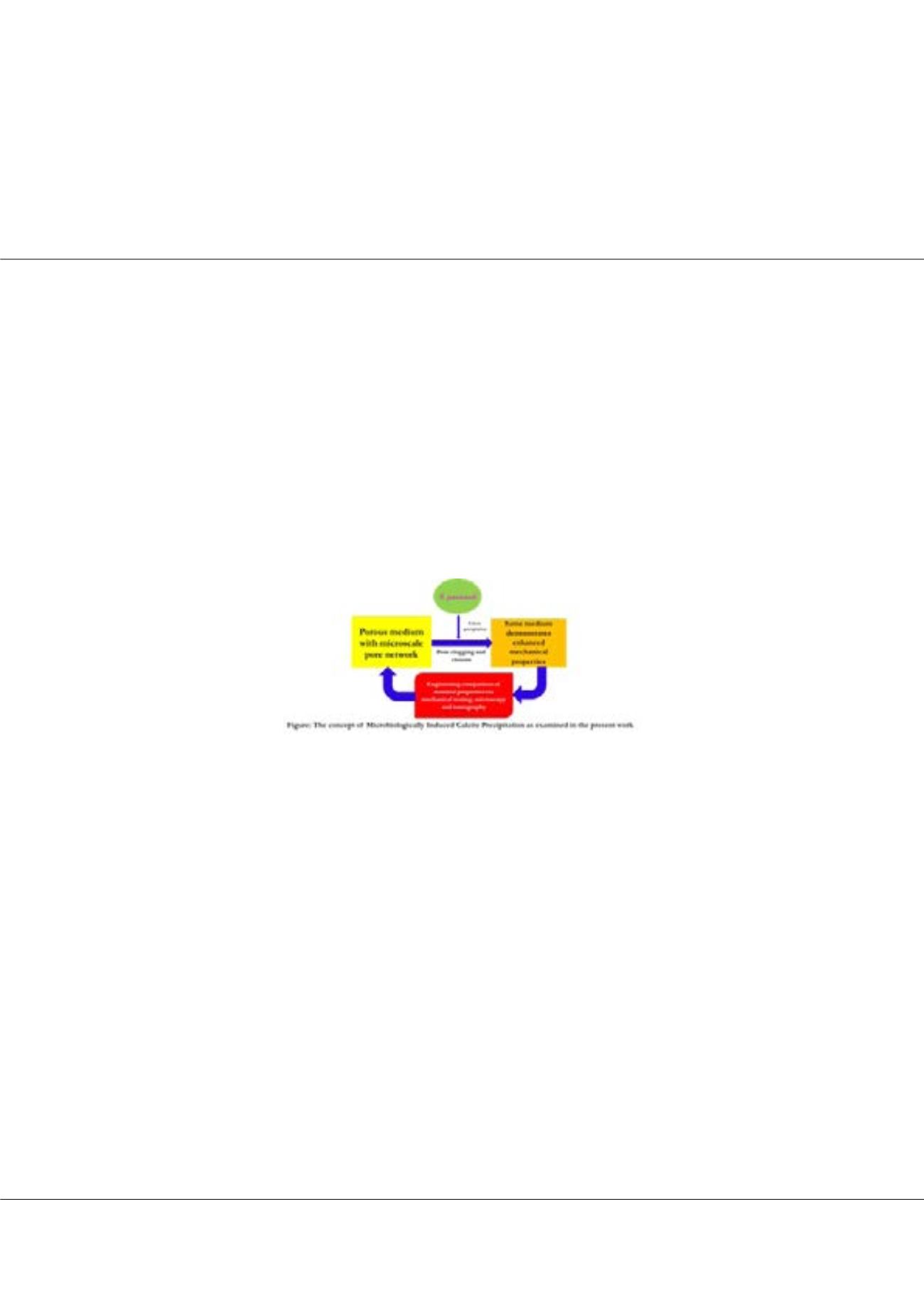

Page 39
Notes:
conferenceseries
.com
RRJOMS | Volume 5 | Issue 4 | July, 2017
July 27-29, 2017 Vancouver, Canada
10
th
International Conference on
Emerging Materials and Nanotechnology
Bacteria can enhance mechanical strength of a porous medium
Swayamdipta Bhaduri, Aloke Kumar
and
Carlo Montemagno
University of Alberta, Canada
A
class of bacterium,
S. pasteurii
can mediate the precipitation of calcium carbonate crystals under the right chemical environment.
These crystals can enter a network of pores in a porous medium and cause clogging. As a result, the structure may gain strength
significantly and exhibit superior mechanical properties. This is characterized by reduction in porosity, physical pore blockage and
increase in elastic moduli. This concept may be extended to a wide array of applications like underground carbon storage and repairing
fractures in fragile structures. In the present study, open foam sponges of two different grades were used as porous media mimics.
We performed comprehensive material testing on samples before and after bacterial treatment and drew quantitative conclusions.
We tested the samples under compressive and impact loads and characterized the modification in mechanical behavior due to pore
clogging. Visual observation of the actual blockage process at the pore scale was performed using Scanning Electron Microscopy
(SEM) and micro-CT scans. We noticed a significant change in mechanical properties. To conclude, this bacteriummay be used as an
agent to cause pore-clogging at the microscale and the idea applied to a range of applications.
Biography
Swayamdipta Bhaduri is a PhD Candidate in Engineering at the Ingenuity Lab in the University of Alberta, Edmonton. He has been working on the several biological,
chemical and physical aspects of the micro-scale fluid transport associated with Microbiologically Induced Calcite Precipitation (MICP) mediated by
S. pasteurii
. His
expertise lies in the areas of nanofabrication, biomicrofluidics, and experimental fluid mechanics. He has an MS and a Bachelor’s degree in Mechanical Engineering
from the Indian Institute of Technology (IIT) and the National Institute of Technology (NIT) in India, respectively.
sbhaduri@ualberta.caSwayamdipta Bhaduri et al., Res. Rev. J Mat. Sci. 2017
DOI: 10.4172/2321-6212-C1-002
















